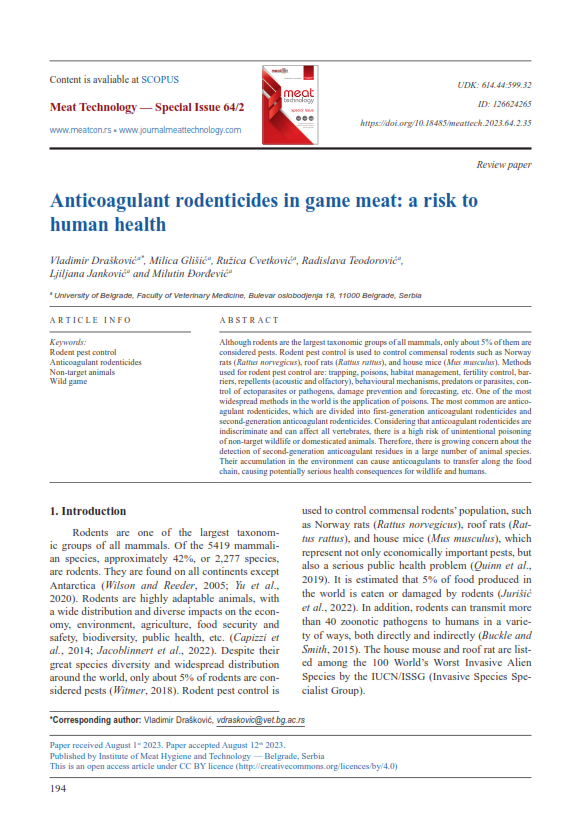Anticoagulant rodenticides in game meat: a risk to human health
Abstract
Although rodents are the largest taxonomic groups of all mammals, only about 5% of them are considered pests. Rodent pest control is used to control commensal rodents such as Norway rats (Rattus norvegicus), roof rats (Rattus rattus), and house mice (Mus musculus). Methods used for rodent pest control are: trapping, poisons, habitat management, fertility control, barriers, repellents (acoustic and olfactory), behavioural mechanisms, predators or parasites, control of ectoparasites or pathogens, damage prevention and forecasting, etc. One of the most widespread methods in the world is the application of poisons. The most common are anticoagulant rodenticides, which are divided into first-generation anticoagulant rodenticides and second-generation anticoagulant rodenticides. Considering that anticoagulant rodenticides are indiscriminate and can affect all vertebrates, there is a high risk of unintentional poisoning of non-target wildlife or domesticated animals. Therefore, there is growing concern about the detection of second-generation anticoagulant residues in a large number of animal species. Their accumulation in the environment can cause anticoagulants to transfer along the food chain, causing potentially serious health consequences for wildlife and humans.





